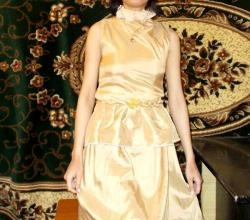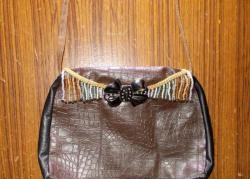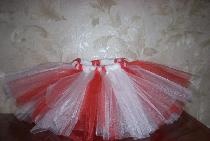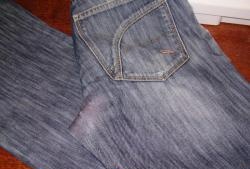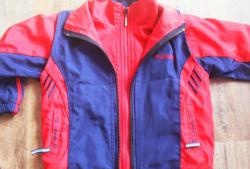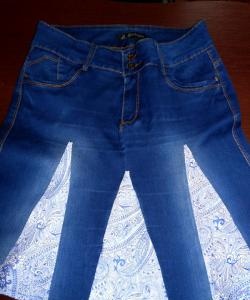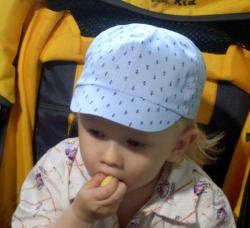Women's shirt with zipper
Hello, dear site visitors. Today I can offer you an idea or just tell you how to sew a buttonless shirt with a zipper and a turn-down collar with your own hands. For its pattern, you can take a fabric that stretches poorly or hardly stretches (for example, chintz). A shirt made from this fabric is suitable for wearing in spring, summer and early autumn. It will take about a week to make it if you sew it by hand. This is what it looks like when trying it on:
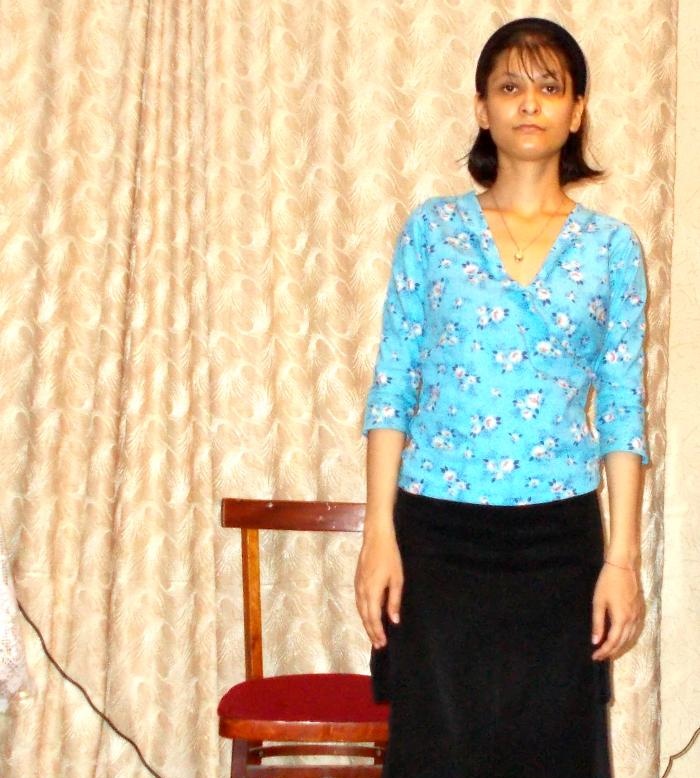

To sew such a shirt, you need the necessary materials, such as:
- Measuring tape;
- Blank paper for making samples;
- Pen-pencil;
- Fabric for the pattern (we have simple chintz);
- Threads;
- Zipper;
- Needles for stabbing;
- Sewing machine or sewing needle.
When starting to work with a pattern, you must first measure the dimensions of the future shirt with a special tape. But it is much easier to obtain this data by measuring the size of any other of the shirts or dresses at the waist taken for the sample; this data will be the most accurate.
For example, our data is as follows: shoulder length - 8.5 cm, neckline length - 25 cm, waist circumference - 65 cm, chest circumference - 77 cm, length from shoulder to waist - 50 cm; arm length - 30 cm, arm elbow circumference - 17 cm. Using these parameters, or data, we must make two paper samples - front and back.
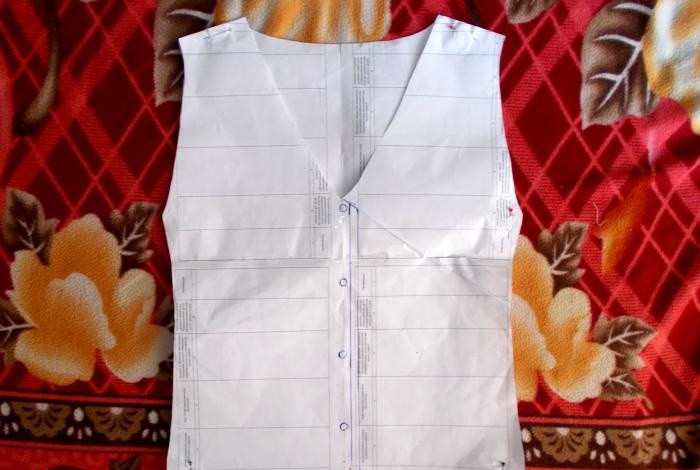
At the beginning of the work we wanted to make a shirt with buttons, but there were no buttons and later we decided that it would be better to make it with a zipper. If you fasten both samples together, then you can more accurately calculate the position of the shoulders and sides so that these areas coincide for both samples.
Next, the resulting paper samples need to be pinned to the fabric with special pins, after which the samples should be cut out of the fabric, leaving small areas at the edges for allowance (2-3 cm wide), so that it is more convenient to sew individual fabric samples together. .
We decided to cut off the upper part (shoulder) of the sample front side of the shirt and cut two models from the fabric according to this sample. (Because the neckline of our shirt is pointed, it will be a little inconvenient to sew seams at the very bottom of this neckline (you will need extra fabric to sew on top)). If you sew two parts of such a sample, right and left, and then connect them together, the finished shirt will look good:
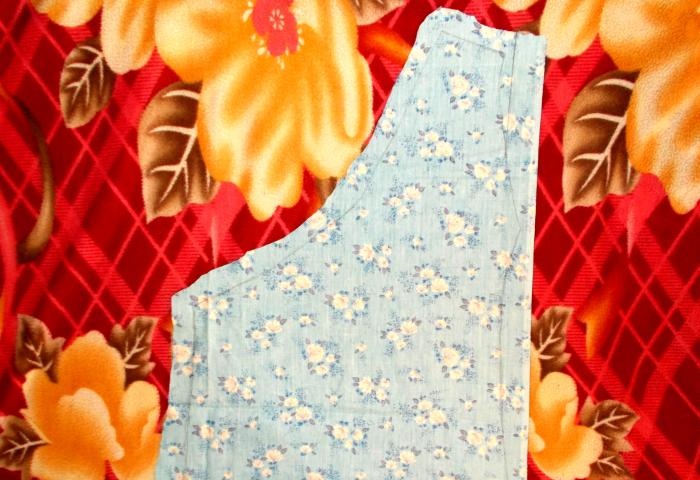
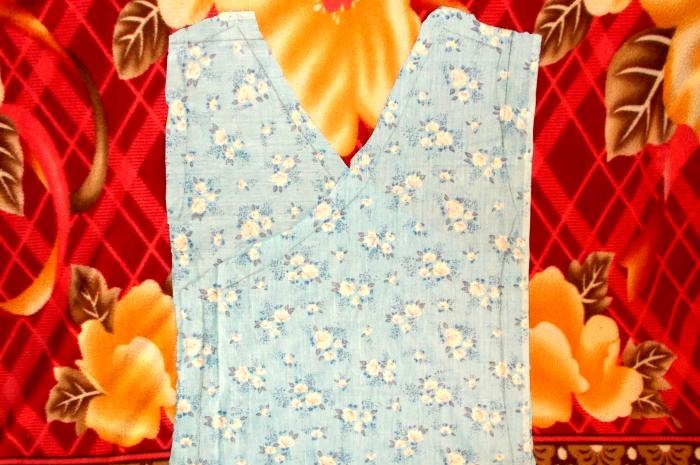
Now we will cut out a sample of the back of the shirt from the fabric. In order to cut accurately, we decided to fold the fabric with the paper template in half. After that, having fastened them together, we cut it out with small indentations:
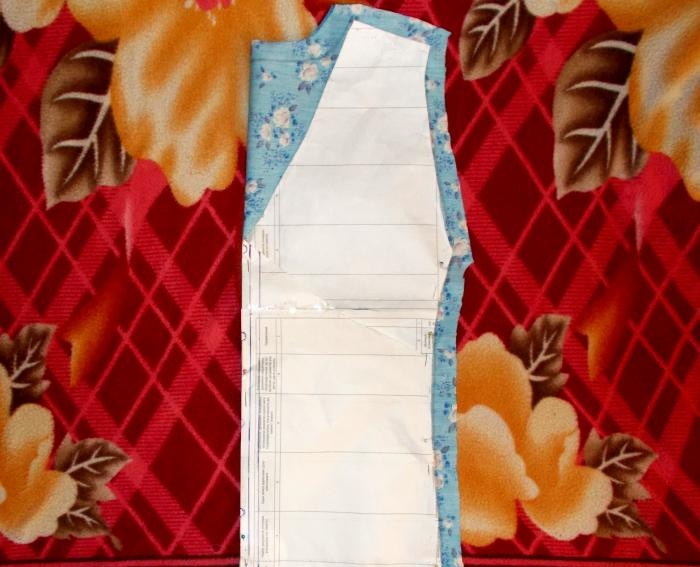
Now we need to make paper sleeve samples. First we draw up drawings of the samples that we need to cut out and then use to make the pattern:
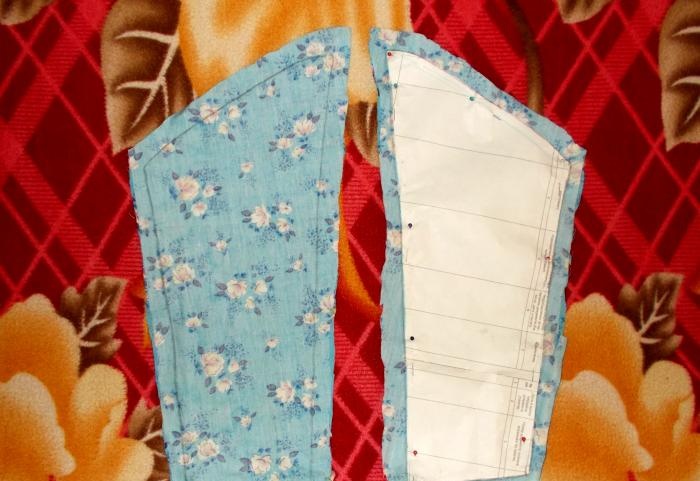
Next, we sew the neckline of both samples of the front of the future shirt.
Having folded the seam allowance sections two or three times, we secure them with pinning needles, after which we make seams. You can use a sewing machine, or you can make the seams yourself, whichever will be more convenient:
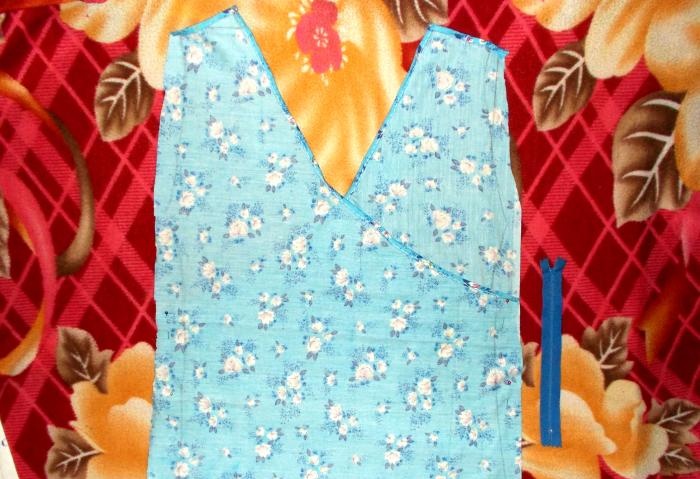
We need to do almost the same thing with the neckline at the back of the future shirt:
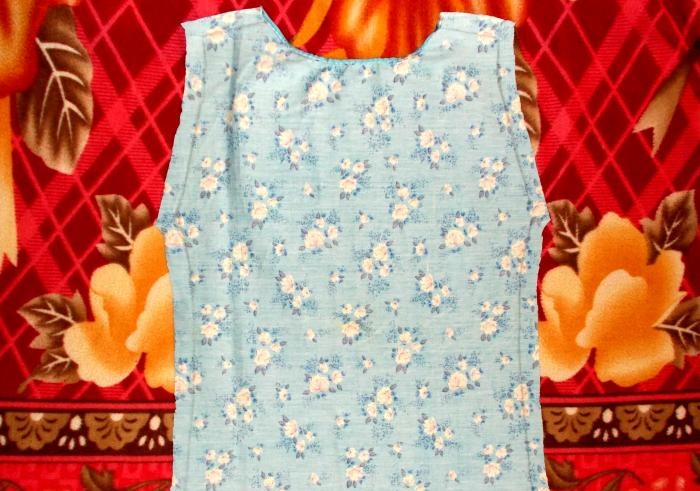
Now we sew together the two sides of the front of the shirt, also fastening them with sewing needles, and on one of the sides we need to sew a zipper:
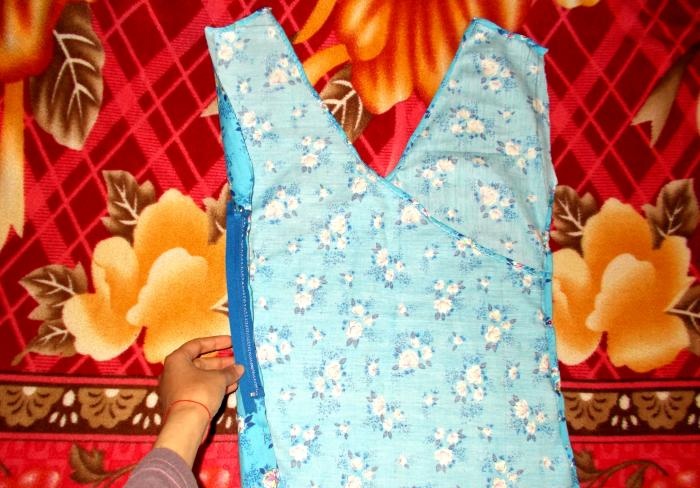
We don't have much fabric left, so we sew each sleeve in two parts and shorten the sleeves (initially we expected to make them full length). Having folded the seam allowance sections on both sides several times, we sew first the sides of the sleeves and then the cuffs. You need to leave a small amount of allowance at the shoulders in order to sew the finished sleeves to the shirt:
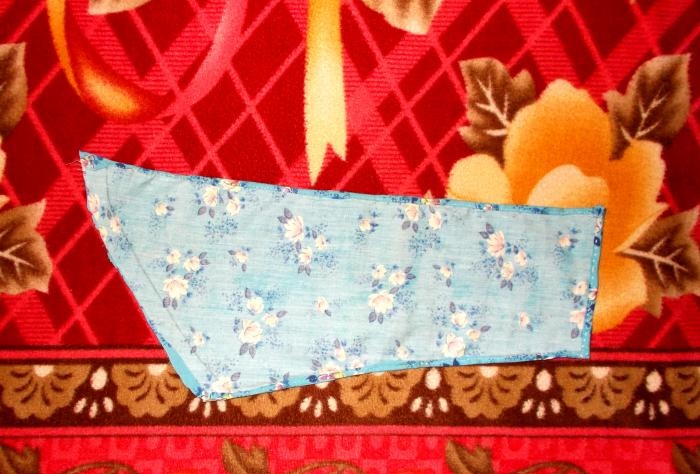
Next, we connect the front and back parts of the future shirt with seams, and we decided to start sewing from the shoulders.
Noticing that one shoulder was slightly higher than the other, we decided to loosen the seam allowance on the short shoulder a little, thus lengthening it and aligning both shoulders. After this, you can join the sides with seams and sew on the finished sleeves:
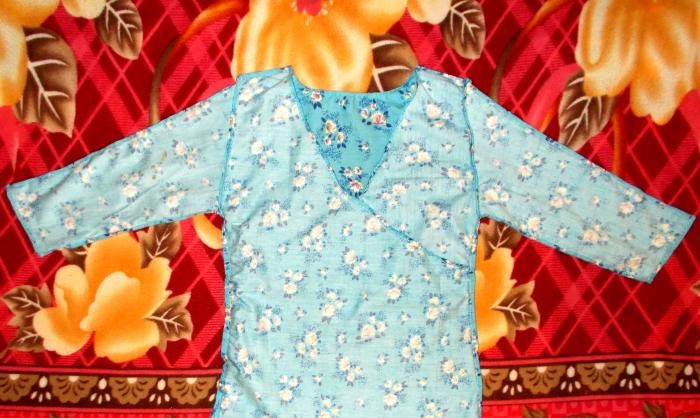
This is what the almost finished shirt looks like from the back:
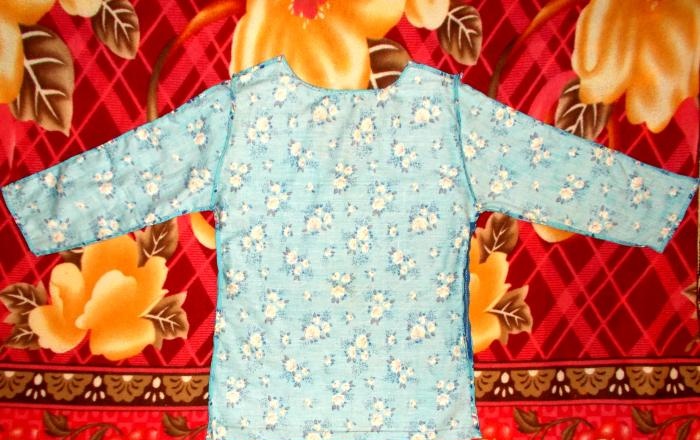
Now all we have to do is fold the allowance areas on the bottom side of the pattern and stitch them:
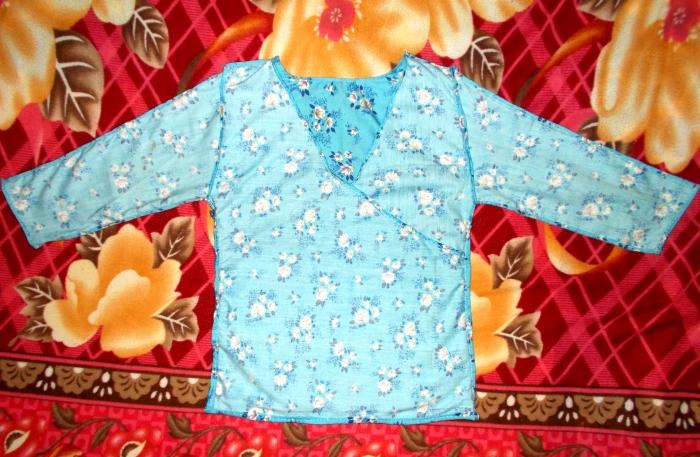
Now we turn the resulting shirt inside out:
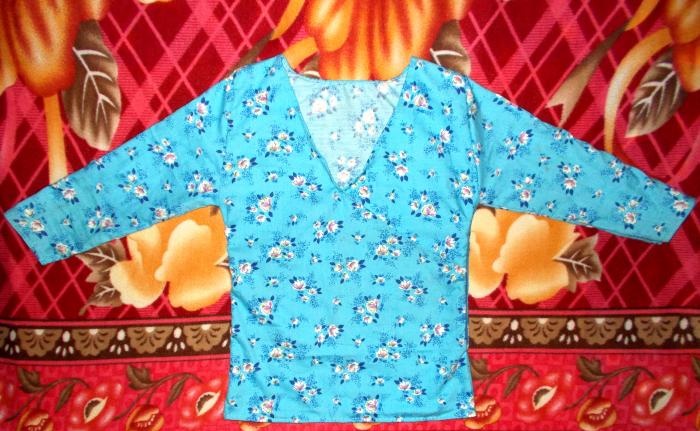
After this, the shirt can be considered ready: it looks good without a collar when trying it on, but if you wish, you can make a collar from the remaining fabric. We decided to make it from four parts - scraps:
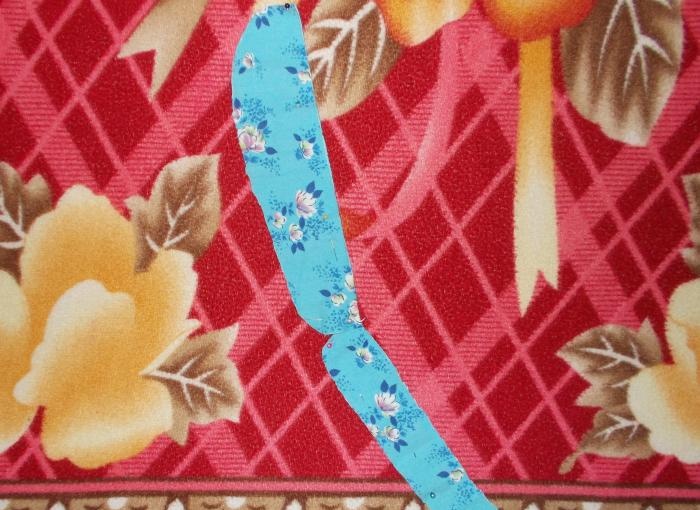
Having folded each part of the collar several times on both sides so that the threads of the fabric do not fray from the outside, you must first carefully make seams on the side of the future collar, and then sew the resulting collar to the shirt.
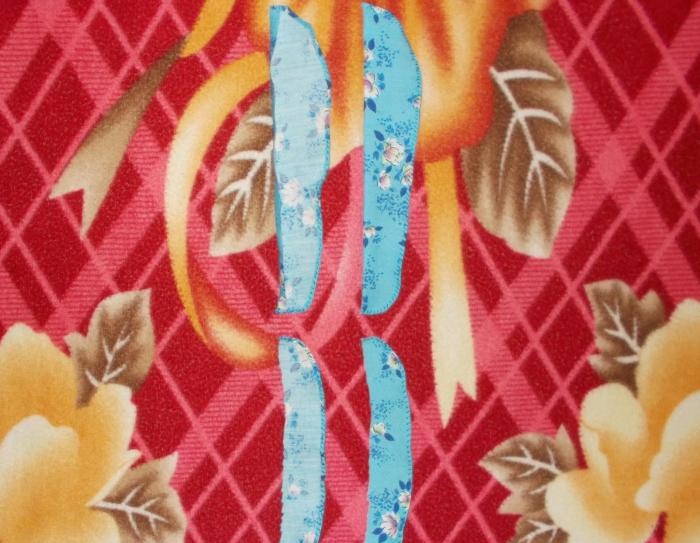
When sewing on the collar, we will need to make two seams: the first seam will need to connect the collar to the neckline at the edges, and the second seam will connect the bottom edges of the folded seam allowance to the neckline fabric.
We have compiled the following sewing patterns according to which our work was done:
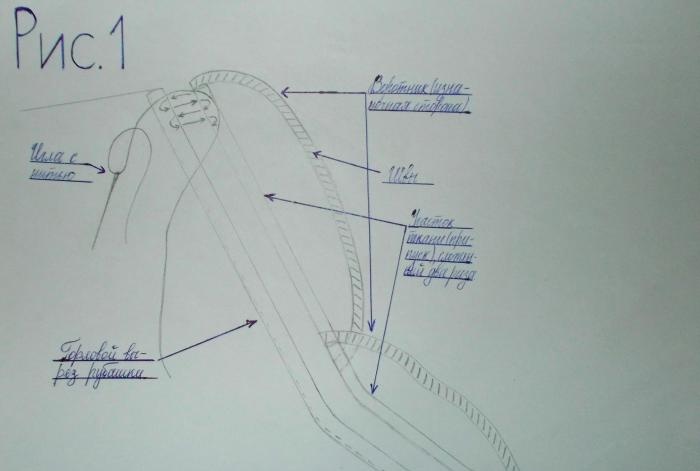

We did all the seams without a machine, by hand, and we didn't even need pinning needles. Our work looked like this:
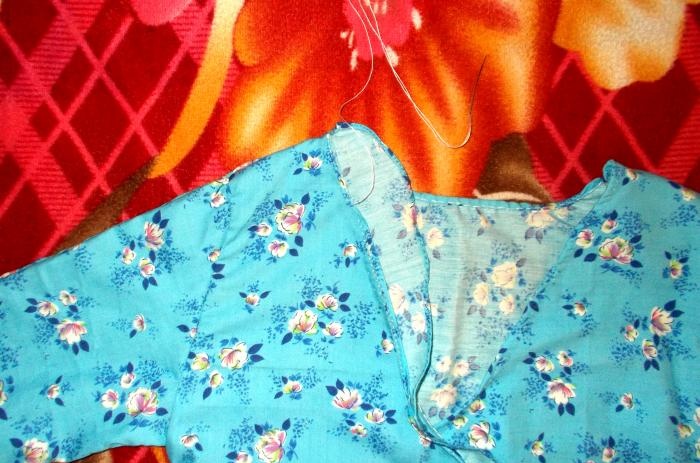
Thus, we need to make and sew all the remaining parts of the collar:

If the ends of an already sewn collar in some places rise too much and reveal the seams, you can hem them to the fabric, after which the shirt will be completely ready.
This is what our shirt looks like:
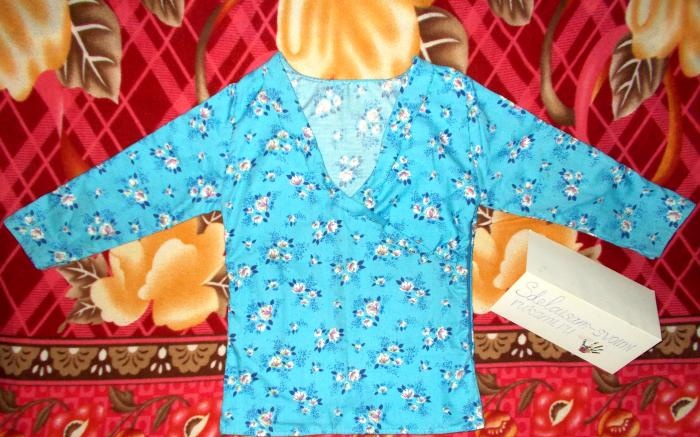
If you try it on, it will look like this:


After that, that's it - our shirt without buttons with a zipper is completely ready.


To sew such a shirt, you need the necessary materials, such as:
- Measuring tape;
- Blank paper for making samples;
- Pen-pencil;
- Fabric for the pattern (we have simple chintz);
- Threads;
- Zipper;
- Needles for stabbing;
- Sewing machine or sewing needle.
When starting to work with a pattern, you must first measure the dimensions of the future shirt with a special tape. But it is much easier to obtain this data by measuring the size of any other of the shirts or dresses at the waist taken for the sample; this data will be the most accurate.
For example, our data is as follows: shoulder length - 8.5 cm, neckline length - 25 cm, waist circumference - 65 cm, chest circumference - 77 cm, length from shoulder to waist - 50 cm; arm length - 30 cm, arm elbow circumference - 17 cm. Using these parameters, or data, we must make two paper samples - front and back.

At the beginning of the work we wanted to make a shirt with buttons, but there were no buttons and later we decided that it would be better to make it with a zipper. If you fasten both samples together, then you can more accurately calculate the position of the shoulders and sides so that these areas coincide for both samples.
Next, the resulting paper samples need to be pinned to the fabric with special pins, after which the samples should be cut out of the fabric, leaving small areas at the edges for allowance (2-3 cm wide), so that it is more convenient to sew individual fabric samples together. .
We decided to cut off the upper part (shoulder) of the sample front side of the shirt and cut two models from the fabric according to this sample. (Because the neckline of our shirt is pointed, it will be a little inconvenient to sew seams at the very bottom of this neckline (you will need extra fabric to sew on top)). If you sew two parts of such a sample, right and left, and then connect them together, the finished shirt will look good:


Now we will cut out a sample of the back of the shirt from the fabric. In order to cut accurately, we decided to fold the fabric with the paper template in half. After that, having fastened them together, we cut it out with small indentations:

Now we need to make paper sleeve samples. First we draw up drawings of the samples that we need to cut out and then use to make the pattern:

Next, we sew the neckline of both samples of the front of the future shirt.
Having folded the seam allowance sections two or three times, we secure them with pinning needles, after which we make seams. You can use a sewing machine, or you can make the seams yourself, whichever will be more convenient:

We need to do almost the same thing with the neckline at the back of the future shirt:

Now we sew together the two sides of the front of the shirt, also fastening them with sewing needles, and on one of the sides we need to sew a zipper:

We don't have much fabric left, so we sew each sleeve in two parts and shorten the sleeves (initially we expected to make them full length). Having folded the seam allowance sections on both sides several times, we sew first the sides of the sleeves and then the cuffs. You need to leave a small amount of allowance at the shoulders in order to sew the finished sleeves to the shirt:

Next, we connect the front and back parts of the future shirt with seams, and we decided to start sewing from the shoulders.
Noticing that one shoulder was slightly higher than the other, we decided to loosen the seam allowance on the short shoulder a little, thus lengthening it and aligning both shoulders. After this, you can join the sides with seams and sew on the finished sleeves:

This is what the almost finished shirt looks like from the back:

Now all we have to do is fold the allowance areas on the bottom side of the pattern and stitch them:

Now we turn the resulting shirt inside out:

After this, the shirt can be considered ready: it looks good without a collar when trying it on, but if you wish, you can make a collar from the remaining fabric. We decided to make it from four parts - scraps:

Having folded each part of the collar several times on both sides so that the threads of the fabric do not fray from the outside, you must first carefully make seams on the side of the future collar, and then sew the resulting collar to the shirt.

When sewing on the collar, we will need to make two seams: the first seam will need to connect the collar to the neckline at the edges, and the second seam will connect the bottom edges of the folded seam allowance to the neckline fabric.
We have compiled the following sewing patterns according to which our work was done:


We did all the seams without a machine, by hand, and we didn't even need pinning needles. Our work looked like this:

Thus, we need to make and sew all the remaining parts of the collar:

If the ends of an already sewn collar in some places rise too much and reveal the seams, you can hem them to the fabric, after which the shirt will be completely ready.
This is what our shirt looks like:

If you try it on, it will look like this:


After that, that's it - our shirt without buttons with a zipper is completely ready.
Similar master classes
Particularly interesting
Comments (0)


